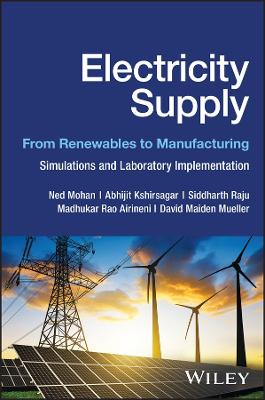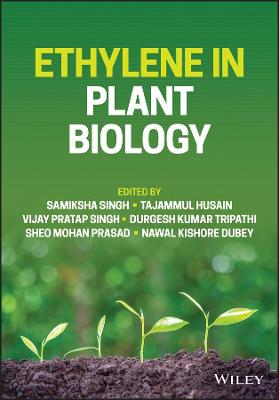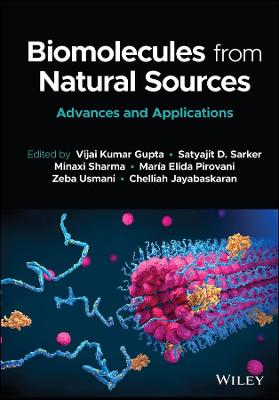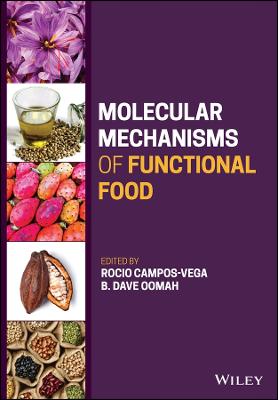Handbook of Enology, Volume 2
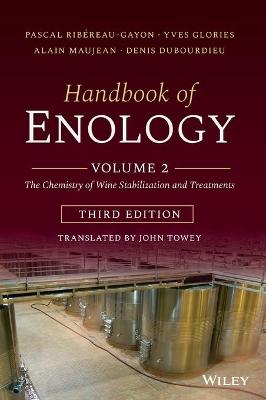 -15%
portes grátis
-15%
portes grátis
Handbook of Enology, Volume 2
The Chemistry of Wine Stabilization and Treatments
Glories, Yves; Ribereau-Gayon, Pascal; Maujean, Alain; Towey, John; Dubourdieu, Denis
John Wiley & Sons Inc
04/2021
560
Dura
Inglês
9781119587767
15 a 20 dias
1280
Descrição não disponível.
Foreword xi
Preface to the Second Edition xiii
Preface to the First Edition xv
Remarks Concerning the Expression of Certain
Parameters of Must and Wine Composition xix
Part I - Chemistry of Wine 1
1 Organic Acids in Wine 3
1.1Introduction 3
1.2The Main Organic Acids 3
1.3Different Types of Acidity 8
1.4The Concept of pH and Its Applications 10
1.5Tartrate Precipitation Mechanism and Predicting Its Effects 24
1.6Tests for Predicting Wine Stability 32
1.7Preventing Tartrate Precipitation 41
References 55
2 Alcohols and Other Volatile Compounds 57
2.1Ethanol 57
2.2Other Simple Alcohols 59
2.3Polyols 62
2.4Aliphatic Fatty Acids 65
2.5Esters 66
2.6Miscellaneous Compounds 71
References 74
3 Carbohydrates 75
3.1Introduction 75
3.2Glucose and Fructose 76
3.3Other Sugars 79
3.4Chemical Properties of Sugars 82
3.5Sugar Derivatives 85
3.6Pectic Substances in Grapes 87
3.7Exocellular Polysaccharides from Microorganisms 95
References 101
4 Dry Extract and Minerals 105
4.1Introduction 105
4.2Dry Extract 106
4.3Ash 108
4.4Inorganic Anions 109
4.5Inorganic Cations 109
4.6Iron and the Iron Casse Mechanism 111
4.7Copper and Copper Casse 117
4.8Heavy Metals 121
References 125
5 Nitrogen Compounds 127
5.1Introduction 127
5.2The Various Forms of Nitrogen 127
5.3Amino Acids 130
5.4Other Forms of Nitrogen 136
5.5Proteins and Protein Haze 142
5.6Preventing Protein Haze 151
References 159
6 Phenolic Compounds 161
6.1Introduction 161
6.2Types of Substances 162
6.3Chemical Properties of Anthocyanins and Tannins 173
6.4Anthocyanin and Tannin Assays: Sensory Properties 196
6.5Evolution of Anthocyanins and Tannins as Grapes Ripen 212
6.6Extracting Tannins and Anthocyanins During Winemaking 225
6.7Chemical Reactions Occurring During Bulk and Bottle Aging 228
6.8Precipitation of Coloring Matter (Color Stability) 233
6.9Origin of the Color of White Wines 235
References 238
7 Varietal Aroma 243
7.1The General Concept of Varietal Aroma 243
7.2Terpene Compounds 245
7.3C13-Norisoprenoid Derivatives 253
7.4Methoxypyrazines 257
7.5Sulfur Compounds with a Thiol Function 260
7.6Furanones 270
7.7Lactones 271
7.8Aromas of American Species 274
References 274
Part II - Wine Stabilization and Treatments 281
8 Main Sensory Defects: Chemical Nature, Origins and Consequences 283
8.1Introduction 283
8.2Oxidative Defects 285
8.3Effect of Various Forms of Bacterial Spoilage 289
8.4Microbiological Origin and Properties of Volatile Phenols 294
8.5Cork Taint 310
8.6Sulfur Derivatives and Reduction Odors 316
8.7Premature Aging of Wine Aroma 331
8.8Sensory Defects Associated with Grapes Affected by Various Types of Rot 336
8.9Miscellaneous Defects 343
References 346
9 The Concept of Clarity and Colloidal Phenomena 351
9.1Clarity and Stability 351
9.2The Colloidal State 354
9.3Colloid Reactivity 357
9.4Protective Colloids and Gum Arabic Treatment 363
References 368
10 Clarification and Stabilization Treatments: Fining Wine 369
10.1 Treating Wine 369
10.2 Sedimentation of Particles in Suspension 372
10.3 Racking: Role and Techniques 374
10.4 Theory of Protein Fining 377
10.5 Tannin-Protein Interactions 385
10.6 Effect of Fining on the Organoleptic Quality of Wine: Concept of Overfining 387
10.7 Products Used in Fining 389
10.8 Fining Techniques 396
10.9 Bentonite Treatment 398
10.10 Miscellaneous Clarification Treatments 403
References 406
11 Clarifying Wine by Filtration and Centrifugation 409
11.1 Principles of Filtration 410
11.2 Laws of Filtration 411
11.3 Methods for Assessing Clarification Quality 414
11.4 Filtration Equipment and Filter Aids 416
11.5 How Filter Layers Function 421
11.6 Filtration through Diatomaceous Earth (or Kieselguhr) Precoats 424
11.7 Filtration Through Cellulose-Based Filter Pads 431
11.8 Membrane Filtration 436
11.9 Crossflow Filtration 439
11.10 Effect of Filtration on the Composition and Organoleptic Character of Wine 443
11.11 Centrifugation 447
References 450
12 Stabilizing Wine by Physical and Physicochemical Processes 451
12.1 Introduction 451
12.2 Heat Stabilization 452
12.3 Wine Stabilization Through Physical Processes Under Development 455
12.4 Cold Stabilization 456
12.5 Ion Exchangers 459
12.6 Electrodialysis Applications in Winemaking 466
References 470
13 Aging Red Wines in Tanks and Barrels: Phenomena Occurring During Aging 471
13.1 Oxidation-Reduction Phenomena 471
13.2 Oxidation-Reduction Potential 473
13.3 Influence of Various Factors on Oxidation-Reduction Potential 478
13.4 Development of the Phenolic Characteristics of Red Wines (Color and Flavor) During Aging 484
13.5 Evolution of Aromatic Thiol Composition in Red Wines During Aging 492
13.6 Bottle Aging of Red Wines 498
13.7 Cellar Practices 505
13.8 Barrel Aging of Red Wines 508
13.9 Effect of Barrel Type on the Development of Red Wine 514
13.10 Constraints and Risks of Barrel Aging 525
References 527
Index 531
Preface to the Second Edition xiii
Preface to the First Edition xv
Remarks Concerning the Expression of Certain
Parameters of Must and Wine Composition xix
Part I - Chemistry of Wine 1
1 Organic Acids in Wine 3
1.1Introduction 3
1.2The Main Organic Acids 3
1.3Different Types of Acidity 8
1.4The Concept of pH and Its Applications 10
1.5Tartrate Precipitation Mechanism and Predicting Its Effects 24
1.6Tests for Predicting Wine Stability 32
1.7Preventing Tartrate Precipitation 41
References 55
2 Alcohols and Other Volatile Compounds 57
2.1Ethanol 57
2.2Other Simple Alcohols 59
2.3Polyols 62
2.4Aliphatic Fatty Acids 65
2.5Esters 66
2.6Miscellaneous Compounds 71
References 74
3 Carbohydrates 75
3.1Introduction 75
3.2Glucose and Fructose 76
3.3Other Sugars 79
3.4Chemical Properties of Sugars 82
3.5Sugar Derivatives 85
3.6Pectic Substances in Grapes 87
3.7Exocellular Polysaccharides from Microorganisms 95
References 101
4 Dry Extract and Minerals 105
4.1Introduction 105
4.2Dry Extract 106
4.3Ash 108
4.4Inorganic Anions 109
4.5Inorganic Cations 109
4.6Iron and the Iron Casse Mechanism 111
4.7Copper and Copper Casse 117
4.8Heavy Metals 121
References 125
5 Nitrogen Compounds 127
5.1Introduction 127
5.2The Various Forms of Nitrogen 127
5.3Amino Acids 130
5.4Other Forms of Nitrogen 136
5.5Proteins and Protein Haze 142
5.6Preventing Protein Haze 151
References 159
6 Phenolic Compounds 161
6.1Introduction 161
6.2Types of Substances 162
6.3Chemical Properties of Anthocyanins and Tannins 173
6.4Anthocyanin and Tannin Assays: Sensory Properties 196
6.5Evolution of Anthocyanins and Tannins as Grapes Ripen 212
6.6Extracting Tannins and Anthocyanins During Winemaking 225
6.7Chemical Reactions Occurring During Bulk and Bottle Aging 228
6.8Precipitation of Coloring Matter (Color Stability) 233
6.9Origin of the Color of White Wines 235
References 238
7 Varietal Aroma 243
7.1The General Concept of Varietal Aroma 243
7.2Terpene Compounds 245
7.3C13-Norisoprenoid Derivatives 253
7.4Methoxypyrazines 257
7.5Sulfur Compounds with a Thiol Function 260
7.6Furanones 270
7.7Lactones 271
7.8Aromas of American Species 274
References 274
Part II - Wine Stabilization and Treatments 281
8 Main Sensory Defects: Chemical Nature, Origins and Consequences 283
8.1Introduction 283
8.2Oxidative Defects 285
8.3Effect of Various Forms of Bacterial Spoilage 289
8.4Microbiological Origin and Properties of Volatile Phenols 294
8.5Cork Taint 310
8.6Sulfur Derivatives and Reduction Odors 316
8.7Premature Aging of Wine Aroma 331
8.8Sensory Defects Associated with Grapes Affected by Various Types of Rot 336
8.9Miscellaneous Defects 343
References 346
9 The Concept of Clarity and Colloidal Phenomena 351
9.1Clarity and Stability 351
9.2The Colloidal State 354
9.3Colloid Reactivity 357
9.4Protective Colloids and Gum Arabic Treatment 363
References 368
10 Clarification and Stabilization Treatments: Fining Wine 369
10.1 Treating Wine 369
10.2 Sedimentation of Particles in Suspension 372
10.3 Racking: Role and Techniques 374
10.4 Theory of Protein Fining 377
10.5 Tannin-Protein Interactions 385
10.6 Effect of Fining on the Organoleptic Quality of Wine: Concept of Overfining 387
10.7 Products Used in Fining 389
10.8 Fining Techniques 396
10.9 Bentonite Treatment 398
10.10 Miscellaneous Clarification Treatments 403
References 406
11 Clarifying Wine by Filtration and Centrifugation 409
11.1 Principles of Filtration 410
11.2 Laws of Filtration 411
11.3 Methods for Assessing Clarification Quality 414
11.4 Filtration Equipment and Filter Aids 416
11.5 How Filter Layers Function 421
11.6 Filtration through Diatomaceous Earth (or Kieselguhr) Precoats 424
11.7 Filtration Through Cellulose-Based Filter Pads 431
11.8 Membrane Filtration 436
11.9 Crossflow Filtration 439
11.10 Effect of Filtration on the Composition and Organoleptic Character of Wine 443
11.11 Centrifugation 447
References 450
12 Stabilizing Wine by Physical and Physicochemical Processes 451
12.1 Introduction 451
12.2 Heat Stabilization 452
12.3 Wine Stabilization Through Physical Processes Under Development 455
12.4 Cold Stabilization 456
12.5 Ion Exchangers 459
12.6 Electrodialysis Applications in Winemaking 466
References 470
13 Aging Red Wines in Tanks and Barrels: Phenomena Occurring During Aging 471
13.1 Oxidation-Reduction Phenomena 471
13.2 Oxidation-Reduction Potential 473
13.3 Influence of Various Factors on Oxidation-Reduction Potential 478
13.4 Development of the Phenolic Characteristics of Red Wines (Color and Flavor) During Aging 484
13.5 Evolution of Aromatic Thiol Composition in Red Wines During Aging 492
13.6 Bottle Aging of Red Wines 498
13.7 Cellar Practices 505
13.8 Barrel Aging of Red Wines 508
13.9 Effect of Barrel Type on the Development of Red Wine 514
13.10 Constraints and Risks of Barrel Aging 525
References 527
Index 531
Este título pertence ao(s) assunto(s) indicados(s). Para ver outros títulos clique no assunto desejado.
wine; wine stabilization processes; wines; chemical nature; organoleptic defects; enology students; grape varieties; research results; english edition; winemaking processes; highly-respected enologists; phenolic compounds; nitrogen substances
Foreword xi
Preface to the Second Edition xiii
Preface to the First Edition xv
Remarks Concerning the Expression of Certain
Parameters of Must and Wine Composition xix
Part I - Chemistry of Wine 1
1 Organic Acids in Wine 3
1.1Introduction 3
1.2The Main Organic Acids 3
1.3Different Types of Acidity 8
1.4The Concept of pH and Its Applications 10
1.5Tartrate Precipitation Mechanism and Predicting Its Effects 24
1.6Tests for Predicting Wine Stability 32
1.7Preventing Tartrate Precipitation 41
References 55
2 Alcohols and Other Volatile Compounds 57
2.1Ethanol 57
2.2Other Simple Alcohols 59
2.3Polyols 62
2.4Aliphatic Fatty Acids 65
2.5Esters 66
2.6Miscellaneous Compounds 71
References 74
3 Carbohydrates 75
3.1Introduction 75
3.2Glucose and Fructose 76
3.3Other Sugars 79
3.4Chemical Properties of Sugars 82
3.5Sugar Derivatives 85
3.6Pectic Substances in Grapes 87
3.7Exocellular Polysaccharides from Microorganisms 95
References 101
4 Dry Extract and Minerals 105
4.1Introduction 105
4.2Dry Extract 106
4.3Ash 108
4.4Inorganic Anions 109
4.5Inorganic Cations 109
4.6Iron and the Iron Casse Mechanism 111
4.7Copper and Copper Casse 117
4.8Heavy Metals 121
References 125
5 Nitrogen Compounds 127
5.1Introduction 127
5.2The Various Forms of Nitrogen 127
5.3Amino Acids 130
5.4Other Forms of Nitrogen 136
5.5Proteins and Protein Haze 142
5.6Preventing Protein Haze 151
References 159
6 Phenolic Compounds 161
6.1Introduction 161
6.2Types of Substances 162
6.3Chemical Properties of Anthocyanins and Tannins 173
6.4Anthocyanin and Tannin Assays: Sensory Properties 196
6.5Evolution of Anthocyanins and Tannins as Grapes Ripen 212
6.6Extracting Tannins and Anthocyanins During Winemaking 225
6.7Chemical Reactions Occurring During Bulk and Bottle Aging 228
6.8Precipitation of Coloring Matter (Color Stability) 233
6.9Origin of the Color of White Wines 235
References 238
7 Varietal Aroma 243
7.1The General Concept of Varietal Aroma 243
7.2Terpene Compounds 245
7.3C13-Norisoprenoid Derivatives 253
7.4Methoxypyrazines 257
7.5Sulfur Compounds with a Thiol Function 260
7.6Furanones 270
7.7Lactones 271
7.8Aromas of American Species 274
References 274
Part II - Wine Stabilization and Treatments 281
8 Main Sensory Defects: Chemical Nature, Origins and Consequences 283
8.1Introduction 283
8.2Oxidative Defects 285
8.3Effect of Various Forms of Bacterial Spoilage 289
8.4Microbiological Origin and Properties of Volatile Phenols 294
8.5Cork Taint 310
8.6Sulfur Derivatives and Reduction Odors 316
8.7Premature Aging of Wine Aroma 331
8.8Sensory Defects Associated with Grapes Affected by Various Types of Rot 336
8.9Miscellaneous Defects 343
References 346
9 The Concept of Clarity and Colloidal Phenomena 351
9.1Clarity and Stability 351
9.2The Colloidal State 354
9.3Colloid Reactivity 357
9.4Protective Colloids and Gum Arabic Treatment 363
References 368
10 Clarification and Stabilization Treatments: Fining Wine 369
10.1 Treating Wine 369
10.2 Sedimentation of Particles in Suspension 372
10.3 Racking: Role and Techniques 374
10.4 Theory of Protein Fining 377
10.5 Tannin-Protein Interactions 385
10.6 Effect of Fining on the Organoleptic Quality of Wine: Concept of Overfining 387
10.7 Products Used in Fining 389
10.8 Fining Techniques 396
10.9 Bentonite Treatment 398
10.10 Miscellaneous Clarification Treatments 403
References 406
11 Clarifying Wine by Filtration and Centrifugation 409
11.1 Principles of Filtration 410
11.2 Laws of Filtration 411
11.3 Methods for Assessing Clarification Quality 414
11.4 Filtration Equipment and Filter Aids 416
11.5 How Filter Layers Function 421
11.6 Filtration through Diatomaceous Earth (or Kieselguhr) Precoats 424
11.7 Filtration Through Cellulose-Based Filter Pads 431
11.8 Membrane Filtration 436
11.9 Crossflow Filtration 439
11.10 Effect of Filtration on the Composition and Organoleptic Character of Wine 443
11.11 Centrifugation 447
References 450
12 Stabilizing Wine by Physical and Physicochemical Processes 451
12.1 Introduction 451
12.2 Heat Stabilization 452
12.3 Wine Stabilization Through Physical Processes Under Development 455
12.4 Cold Stabilization 456
12.5 Ion Exchangers 459
12.6 Electrodialysis Applications in Winemaking 466
References 470
13 Aging Red Wines in Tanks and Barrels: Phenomena Occurring During Aging 471
13.1 Oxidation-Reduction Phenomena 471
13.2 Oxidation-Reduction Potential 473
13.3 Influence of Various Factors on Oxidation-Reduction Potential 478
13.4 Development of the Phenolic Characteristics of Red Wines (Color and Flavor) During Aging 484
13.5 Evolution of Aromatic Thiol Composition in Red Wines During Aging 492
13.6 Bottle Aging of Red Wines 498
13.7 Cellar Practices 505
13.8 Barrel Aging of Red Wines 508
13.9 Effect of Barrel Type on the Development of Red Wine 514
13.10 Constraints and Risks of Barrel Aging 525
References 527
Index 531
Preface to the Second Edition xiii
Preface to the First Edition xv
Remarks Concerning the Expression of Certain
Parameters of Must and Wine Composition xix
Part I - Chemistry of Wine 1
1 Organic Acids in Wine 3
1.1Introduction 3
1.2The Main Organic Acids 3
1.3Different Types of Acidity 8
1.4The Concept of pH and Its Applications 10
1.5Tartrate Precipitation Mechanism and Predicting Its Effects 24
1.6Tests for Predicting Wine Stability 32
1.7Preventing Tartrate Precipitation 41
References 55
2 Alcohols and Other Volatile Compounds 57
2.1Ethanol 57
2.2Other Simple Alcohols 59
2.3Polyols 62
2.4Aliphatic Fatty Acids 65
2.5Esters 66
2.6Miscellaneous Compounds 71
References 74
3 Carbohydrates 75
3.1Introduction 75
3.2Glucose and Fructose 76
3.3Other Sugars 79
3.4Chemical Properties of Sugars 82
3.5Sugar Derivatives 85
3.6Pectic Substances in Grapes 87
3.7Exocellular Polysaccharides from Microorganisms 95
References 101
4 Dry Extract and Minerals 105
4.1Introduction 105
4.2Dry Extract 106
4.3Ash 108
4.4Inorganic Anions 109
4.5Inorganic Cations 109
4.6Iron and the Iron Casse Mechanism 111
4.7Copper and Copper Casse 117
4.8Heavy Metals 121
References 125
5 Nitrogen Compounds 127
5.1Introduction 127
5.2The Various Forms of Nitrogen 127
5.3Amino Acids 130
5.4Other Forms of Nitrogen 136
5.5Proteins and Protein Haze 142
5.6Preventing Protein Haze 151
References 159
6 Phenolic Compounds 161
6.1Introduction 161
6.2Types of Substances 162
6.3Chemical Properties of Anthocyanins and Tannins 173
6.4Anthocyanin and Tannin Assays: Sensory Properties 196
6.5Evolution of Anthocyanins and Tannins as Grapes Ripen 212
6.6Extracting Tannins and Anthocyanins During Winemaking 225
6.7Chemical Reactions Occurring During Bulk and Bottle Aging 228
6.8Precipitation of Coloring Matter (Color Stability) 233
6.9Origin of the Color of White Wines 235
References 238
7 Varietal Aroma 243
7.1The General Concept of Varietal Aroma 243
7.2Terpene Compounds 245
7.3C13-Norisoprenoid Derivatives 253
7.4Methoxypyrazines 257
7.5Sulfur Compounds with a Thiol Function 260
7.6Furanones 270
7.7Lactones 271
7.8Aromas of American Species 274
References 274
Part II - Wine Stabilization and Treatments 281
8 Main Sensory Defects: Chemical Nature, Origins and Consequences 283
8.1Introduction 283
8.2Oxidative Defects 285
8.3Effect of Various Forms of Bacterial Spoilage 289
8.4Microbiological Origin and Properties of Volatile Phenols 294
8.5Cork Taint 310
8.6Sulfur Derivatives and Reduction Odors 316
8.7Premature Aging of Wine Aroma 331
8.8Sensory Defects Associated with Grapes Affected by Various Types of Rot 336
8.9Miscellaneous Defects 343
References 346
9 The Concept of Clarity and Colloidal Phenomena 351
9.1Clarity and Stability 351
9.2The Colloidal State 354
9.3Colloid Reactivity 357
9.4Protective Colloids and Gum Arabic Treatment 363
References 368
10 Clarification and Stabilization Treatments: Fining Wine 369
10.1 Treating Wine 369
10.2 Sedimentation of Particles in Suspension 372
10.3 Racking: Role and Techniques 374
10.4 Theory of Protein Fining 377
10.5 Tannin-Protein Interactions 385
10.6 Effect of Fining on the Organoleptic Quality of Wine: Concept of Overfining 387
10.7 Products Used in Fining 389
10.8 Fining Techniques 396
10.9 Bentonite Treatment 398
10.10 Miscellaneous Clarification Treatments 403
References 406
11 Clarifying Wine by Filtration and Centrifugation 409
11.1 Principles of Filtration 410
11.2 Laws of Filtration 411
11.3 Methods for Assessing Clarification Quality 414
11.4 Filtration Equipment and Filter Aids 416
11.5 How Filter Layers Function 421
11.6 Filtration through Diatomaceous Earth (or Kieselguhr) Precoats 424
11.7 Filtration Through Cellulose-Based Filter Pads 431
11.8 Membrane Filtration 436
11.9 Crossflow Filtration 439
11.10 Effect of Filtration on the Composition and Organoleptic Character of Wine 443
11.11 Centrifugation 447
References 450
12 Stabilizing Wine by Physical and Physicochemical Processes 451
12.1 Introduction 451
12.2 Heat Stabilization 452
12.3 Wine Stabilization Through Physical Processes Under Development 455
12.4 Cold Stabilization 456
12.5 Ion Exchangers 459
12.6 Electrodialysis Applications in Winemaking 466
References 470
13 Aging Red Wines in Tanks and Barrels: Phenomena Occurring During Aging 471
13.1 Oxidation-Reduction Phenomena 471
13.2 Oxidation-Reduction Potential 473
13.3 Influence of Various Factors on Oxidation-Reduction Potential 478
13.4 Development of the Phenolic Characteristics of Red Wines (Color and Flavor) During Aging 484
13.5 Evolution of Aromatic Thiol Composition in Red Wines During Aging 492
13.6 Bottle Aging of Red Wines 498
13.7 Cellar Practices 505
13.8 Barrel Aging of Red Wines 508
13.9 Effect of Barrel Type on the Development of Red Wine 514
13.10 Constraints and Risks of Barrel Aging 525
References 527
Index 531
Este título pertence ao(s) assunto(s) indicados(s). Para ver outros títulos clique no assunto desejado.


